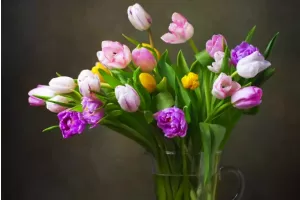The flower language of Putia is victory and consummation. In South Africa, the monarch flower is even regarded as the national flower. It is the most well-known variety in the Protea family, and it is also known as the most luxurious and gorgeous fresh cut flower in the world.
Putia flowers are distributed throughout South Africa and are the most popular and widely grown flowers. The plant life of Putia flower can reach more than 100 years. This variety is suitable for growing in gardens or pots, and is also suitable for making dried flower bulbs.
Leaf color varies from cream to dark red, but pale pink, slightly silvery bracts are the most popular and highly regarded. It has strong ornamental value and medicinal and food value.
Putia prefers warm, dry and sunny conditions, cannot tolerate cold, is afraid of standing water, and requires loose and well-drained acidic soil. It can grow on mountains from 0 meters to 1500 meters above sea level.
Different climatic conditions and geographical environments can cause great changes in the leaves, flower types, color and flowering time of Putia flowers.
Putia flowers have a high demand for water, but the roots should not accumulate water. In spring and autumn, they need to be watered every three days, in winter, they need to be watered once every two weeks, and in summer, they need to be watered once a day. This will not only ensure that the emperor flower has sufficient water, but also avoid water accumulation at the roots.
If you are growing Putia flowers at home, the maintenance of Putia flowers is also very important.
It's cold resistance is not high. If the temperature is lower than 10 degrees for a long time in winter, the growth will be hindered, and the growth will become slow or even stagnant. The leaves are also prone to yellowing and withering due to low temperature.
If the temperature is lower than 0 degrees for a long time, it is prone to freezing damage, and in severe cases, it will lead to death. Therefore, to maintain it in winter, it needs to be moved to a warm room for maintenance, and the room temperature should be kept above 10~15 degrees as much as possible.
If the room temperature is low at night, you can use a large plastic bag to wrap the plant to achieve the effect of preventing cold and keeping warm, and then remove the bag to ventilate when it is warm during the day.


